About us
T's Auto Haven is a premier used car dealership based in the bustling city of Bradford . Our team is dedicated to providing top-notch customer service and offering a wide selection of quality and affordable pre-owned vehicles to fit every budget our mission is simple: to connect drivers with cars they'll truly love. From affordable everyday vehicles to vintage automotive legends, we offer something for every taste, budget, and lifestyle. Visit us today and let us help you find your dream car!
At T's Auto Haven, we're more than just a car dealership—we're car lovers with a passion for history, quality, and customer care.
Whether you're shopping for your first car, your next reliable ride, or simply admiring our classic collection, our friendly team is here to guide you every step of the way—with honesty, transparency, and pride in what we do.

Our Inspiration : A Tribute to Automotive History
At T's Auto Haven, our love for cars runs deep. While we don't sell these vintage classics, they represent the roots of modern motoring and inspire everything we do today. From early engineering marvels to design icons, this collection celebrates the journey of the automobile—and the timeless craftsmanship that still drives us.
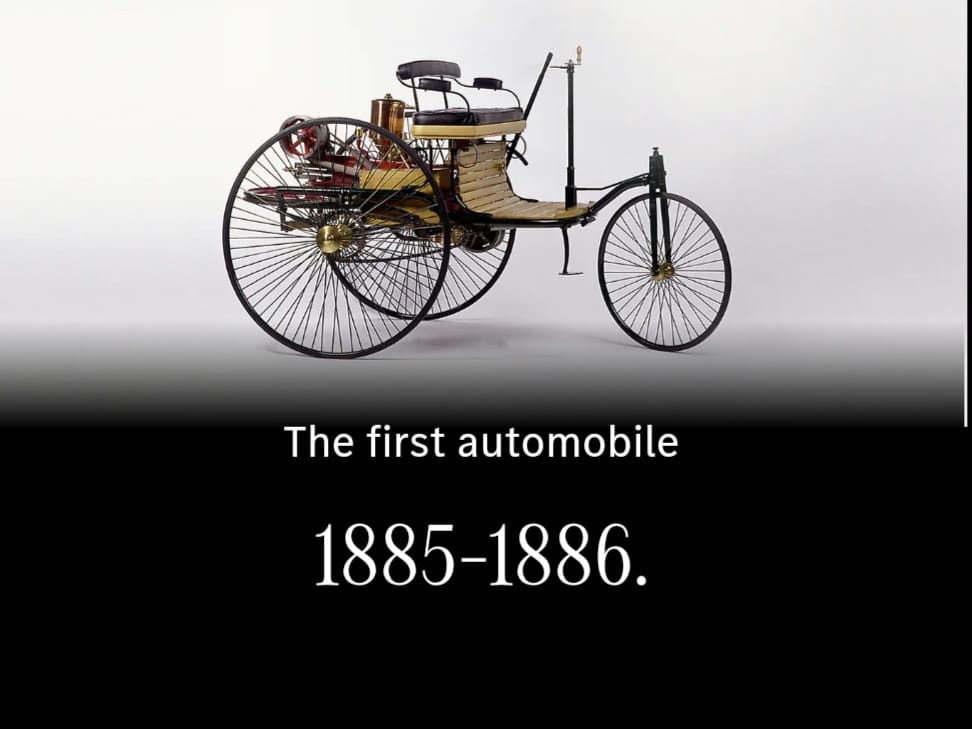
The First Automobile – A Legacy Begins (1885–1886)
At T's Auto Haven, our love for vehicles reaches far beyond the showroom floor. We honor the rich history of automobiles, starting with the Benz Patent-Motorwagen — the world's first true car. Built in Germany between 1885 and 1886 by Karl Benz, this innovative three-wheeler ran on a 0.75 hp gasoline engine and marked the beginning of personal automotive travel.
Celebrating this legacy reminds us why we care so deeply about quality, reliability, and the driving journey.
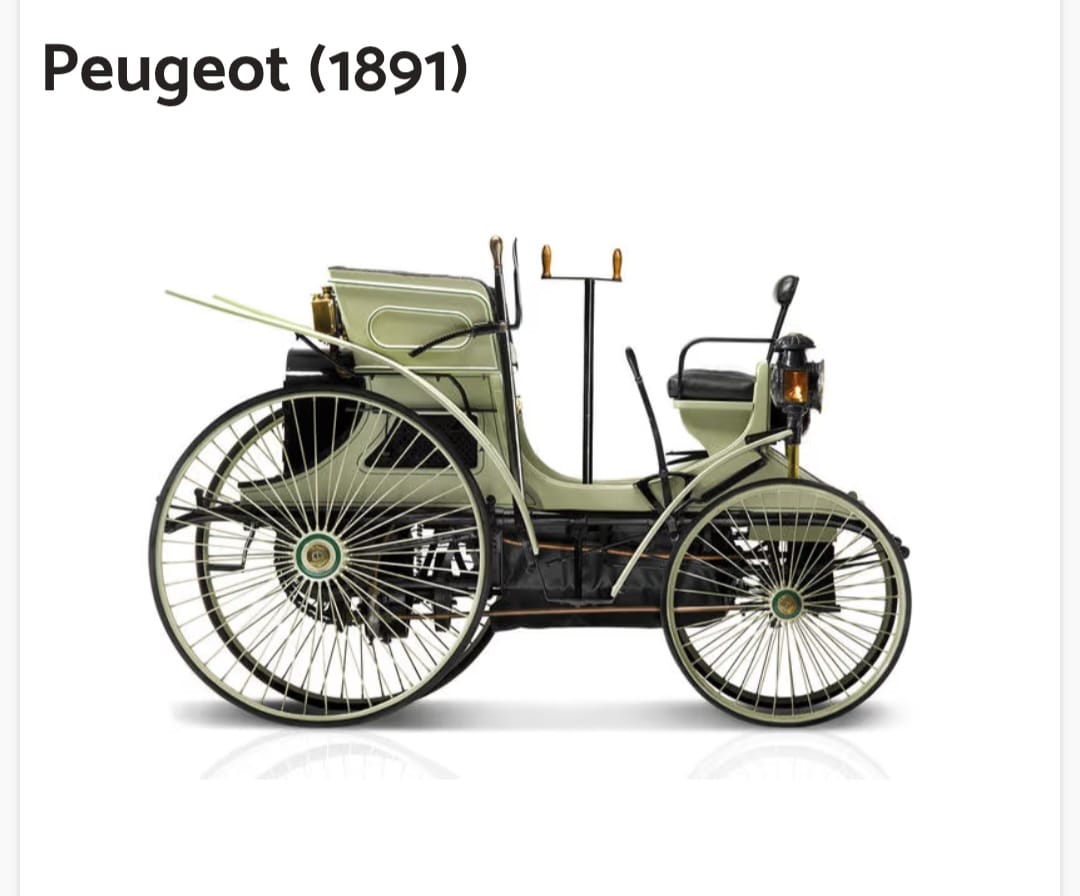
Peugeot Type 3 – France's First Car Takes the Road (1891)
At T's Auto Haven, we celebrate pioneers like Peugeot, whose early vision shaped automotive history. The Peugeot Type 3, introduced in 1891, was the first car manufactured by Peugeot after partnering with Gottlieb Daimler.
This elegant vehicle was powered by a Daimler-designed two-cylinder V-type engine with a top speed of around 11 mph (18 km/h). It featured a lightweight frame, large spoked wheels, and carriage-style seating — blending the familiar with the future.
Built in France, the Type 3 symbolized the beginning of a true French motoring legacy. It proved that automobiles weren't just a German feat — innovation was spreading fast.
Honoring the Peugeot Type 3 reminds us how far the automotive world has come — and how bold dreams became real engines of change.
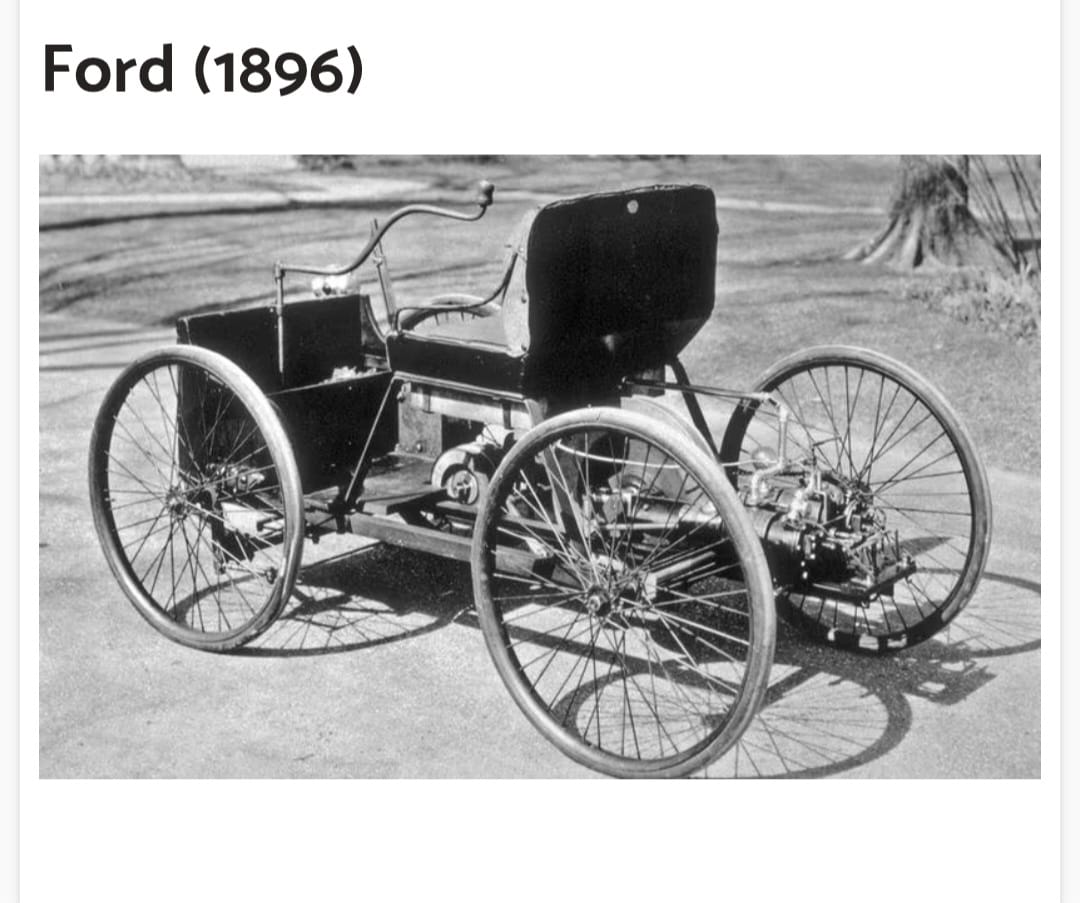
Ford Quadricycle – The First Ride of a Revolution (1896)
Before Ford became a household name, Henry Ford's journey began with this simple yet brilliant machine: the Ford Quadricycle, built in 1896 in Detroit, USA.
This lightweight vehicle ran on a two-cylinder, four-horsepower engine and had just two forward speeds—no reverse gear. It was crafted using bicycle wheels, a basic chassis, and a tiller for steering. Despite its simplicity, it marked the birth of Ford Motor Company's enduring legacy.
Henry Ford built this car in a tiny shed behind his home—proving that even the biggest revolutions can begin in the humblest places.
At T's Auto Haven, we honour pioneers like Ford who sparked an industry and made mobility a reality for millions..
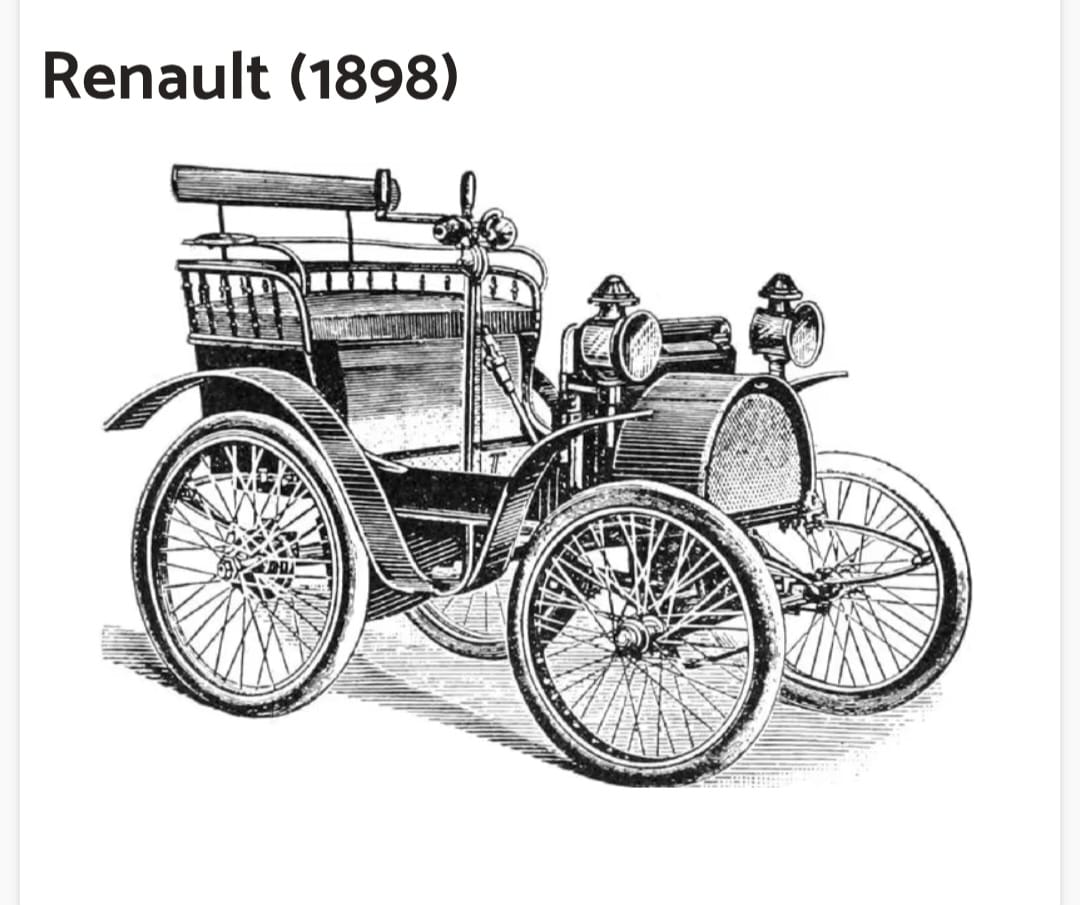
Renault Voiturette – The French Touch of Innovation (1898)
In 1898, Louis Renault, a young French engineer, introduced the Renault Voiturette, a compact, elegant motor car that revolutionized how people viewed personal transportation in Europe.
This early Renault featured a De Dion-Bouton engine mounted in the rear, direct-drive transmission, and a compact body that made it ideal for navigating narrow city streets. Its stylish look and dependable engineering quickly gained popularity in France and beyond.
Renault wasn't just building a car—it was crafting a symbol of refinement, style, and mechanical precision.
At T's Auto Haven, we celebrate cars like the Voiturette that shaped driving culture with charm and craftsmanship.
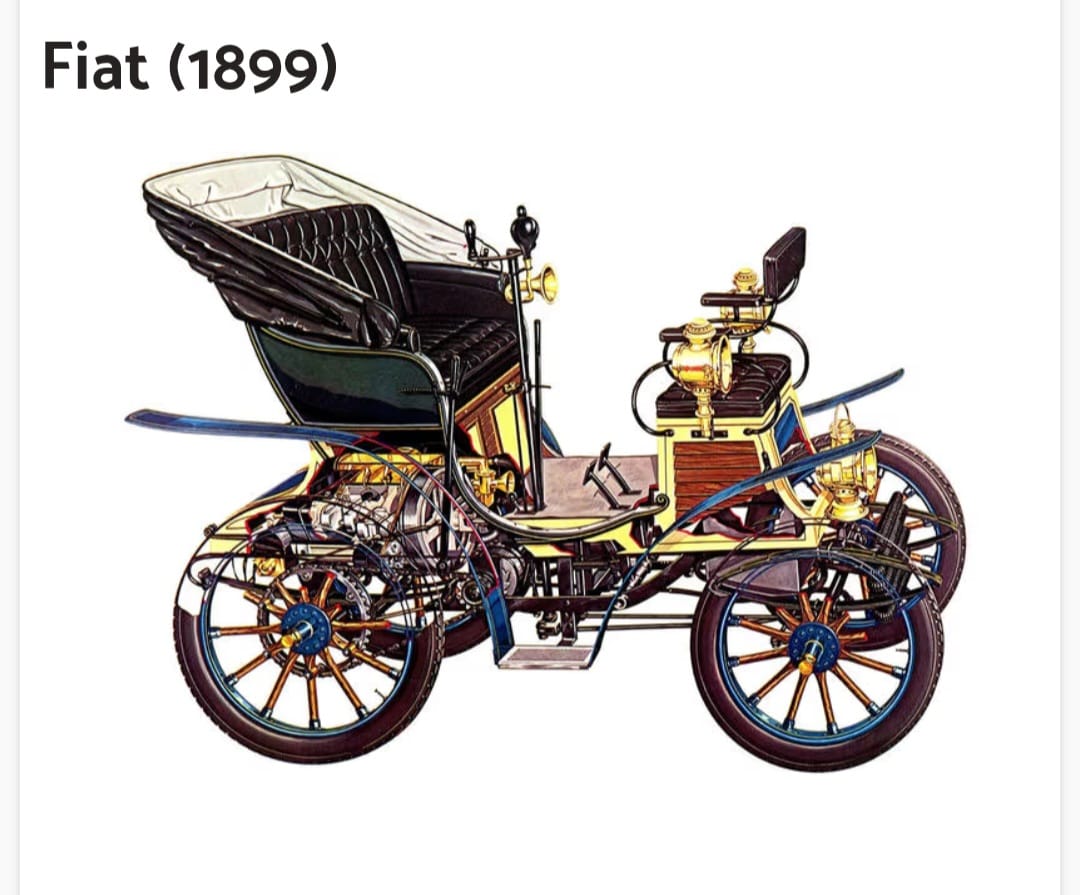
Fiat 3½ HP – Italy's Elegant Entry into the Motor Age (1899)
In 1899, the newly founded Fabbrica Italiana Automobili Torino (FIAT) introduced its first car—the Fiat 3½ HP. It marked the beginning of Italy's proud automotive tradition with a blend of craftsmanship, beauty, and engineering precision.
This early model featured a rear-mounted engine, 3.5 horsepower, and a two-speed gearbox. With a lightweight frame and eye-catching brass fittings, it could carry two passengers comfortably while reaching speeds of around 35 km/h (22 mph)—a respectable feat for the time.
The Fiat 3½ HP wasn't just a car—it was a glimpse into the future of stylish European motoring.
At T's Auto Haven, we salute the Fiat legacy—where passion and precision meet the open road.
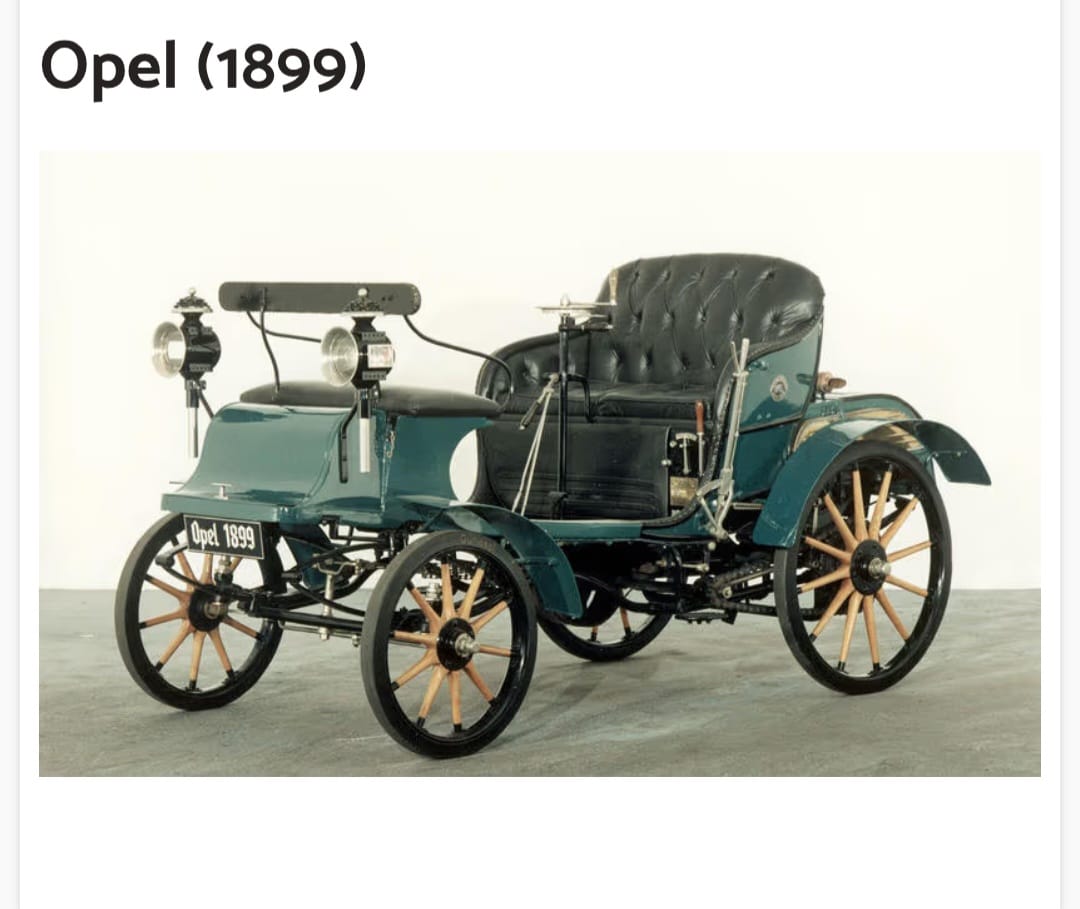
Opel (1899) – The German Legacy in Motion
In 1899, Opel, a German company originally known for sewing machines and bicycles, ventured into automotive history by producing its first motor vehicle—the Opel Patent Motor Car, System Lutzmann. This elegant carriage-style car marked the brand's entry into a rapidly evolving world of transportation.
This pioneering model featured a single-cylinder engine delivering 1.5 horsepower, rear-wheel drive, and a tiller steering system. With its wooden-spoked wheels, leather seats, and oil lamp headlights, the car blended classic coachwork with bold new engineering.
Although it could reach speeds of just around 12 km/h (7.5 mph), the Opel 1899 stood as a symbol of vision and innovation. It paved the way for Opel to become a major force in the German and European automotive industries.
At T's Auto Haven, we celebrate early icons like the Opel—vehicles that transformed dreams of motion into reality through courage, elegance, and ingenuity.
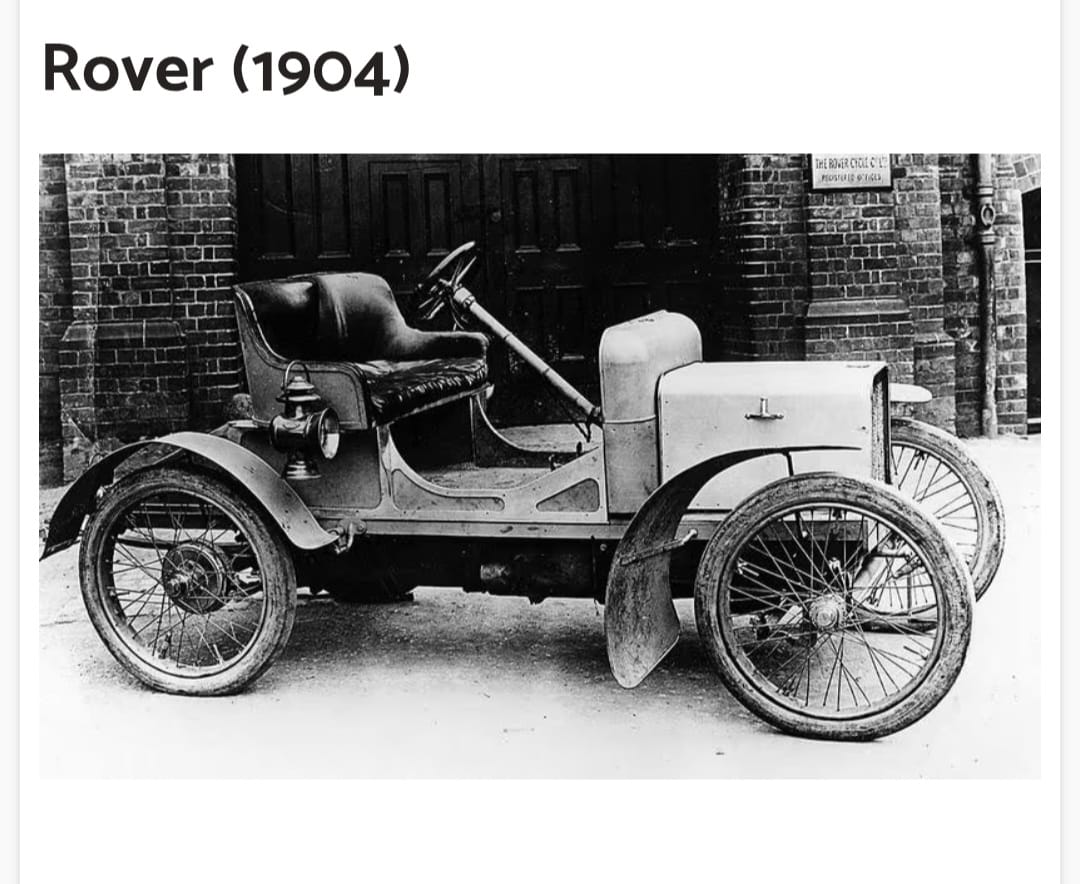
Rover 8HP – Britain's Early Symbol of Innovation and Simplicity (1904)
In 1904, the British company Rover, originally a bicycle manufacturer, introduced the Rover 8HP, its first fully developed motorcar. It marked the beginning of Rover's journey into automotive excellence—laying the foundation for one of the UK's most respected car brands.
Powered by a single-cylinder, 8-horsepower engine, the Rover 8HP came with a front-engine, rear-wheel-drive layout and an elegantly simple open-body design. Its wire-spoke wheels, leather seating, and minimalist dashboard reflected the clean engineering standards of the early 20th century.
The car was known for its reliability and ease of use, gaining attention among motorists who wanted a practical yet forward-thinking alternative to the bulkier cars of the time. It brought mobility to the masses in a new and accessible way.
At T's Auto Haven, we honor the legacy of the Rover 8HP—an unassuming classic that drove Britain into the modern motoring era with style and function.
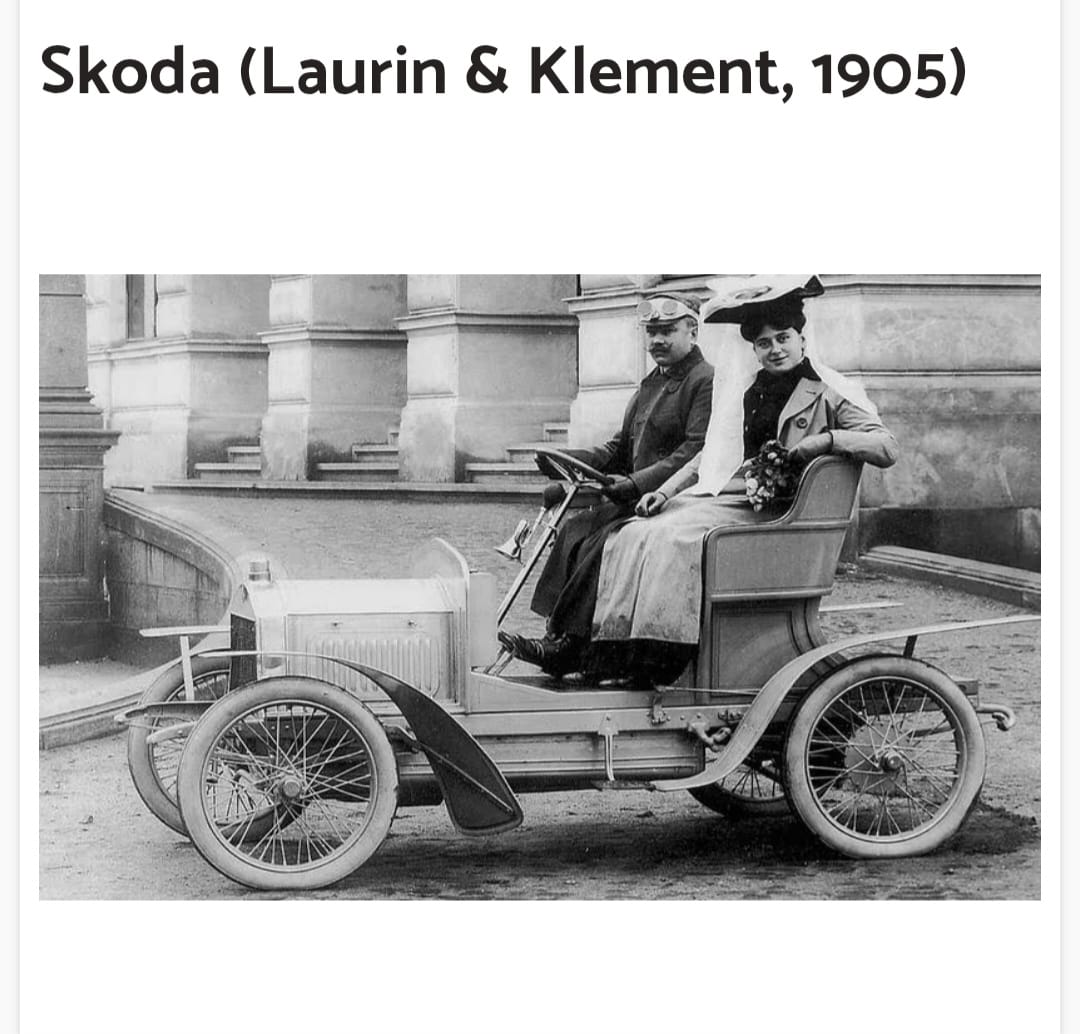
Laurin & Klement Voiturette – The Bohemian Pioneer of Czech Motoring (1905)
In 1905, Czech innovators Václav Laurin and Václav Klement introduced the Laurin & Klement Voiturette A, one of the earliest and most refined motorcars of Central Europe. This lightweight, beautifully crafted automobile helped set the stage for what would eventually become Škoda Auto.
Fitted with a single-cylinder, 7-horsepower engine, the Voiturette A reached speeds of around 40 km/h (25 mph). It featured wire-spoke wheels, a graceful open body, and carefully sculpted fenders—ideal for the narrow cobblestone streets of old European towns. The seating was upright and elegant, often seen chauffeuring the well-dressed elite of the Austro-Hungarian Empire.
The car blended function and fashion at a time when the idea of motoring was still a luxury. It became one of the most popular early models in the region and laid the foundation for a long-lasting automotive legacy.
At T's Auto Haven, we remember classics like the Voiturette—cars that didn't just move people, but moved history forward with elegance and pride.
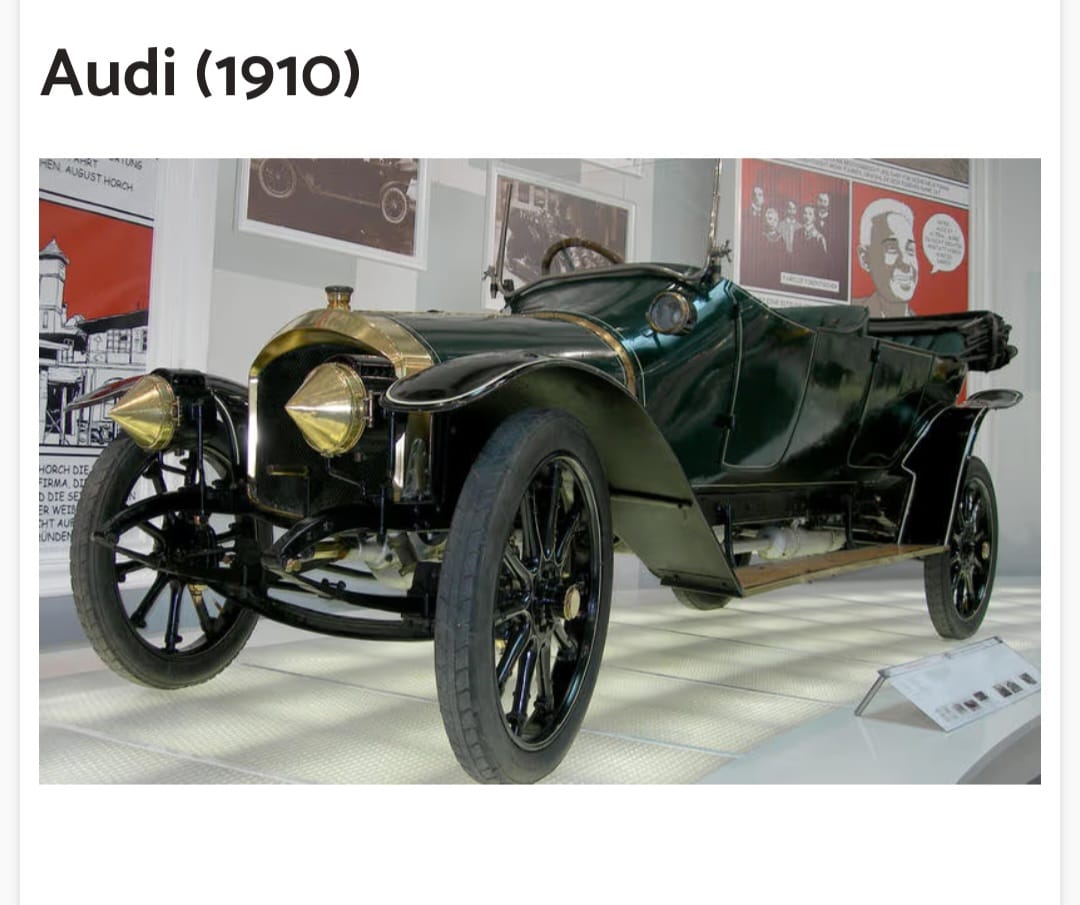
Audi Type A – A Bold Debut for German Precision Engineering (1910)
In 1910, August Horch, having founded a new company after parting ways with his original brand, introduced the Audi Type A—a refined and forward-thinking automobile that became the first car to bear the Audi name. This marked the beginning of a legacy that would shape German automotive excellence for over a century.
The Type A featured a 2.6-litre four-cylinder engine producing 22 horsepower, with a four-speed manual transmission and a top speed of around 75 km/h (47 mph). Designed with long sweeping fenders, brass fixtures, and elegant body lines, it was as much a statement of prestige as it was a machine of performance.
Built in Zwickau, Germany, the Audi Type A was one of the first German cars to participate in international motorsport, proving that beauty and power could go hand in hand.
At T's Auto Haven, we celebrate legends like the Audi Type A—cars that didn't just mark a beginning, but announced a new era of innovation, style, and speed.
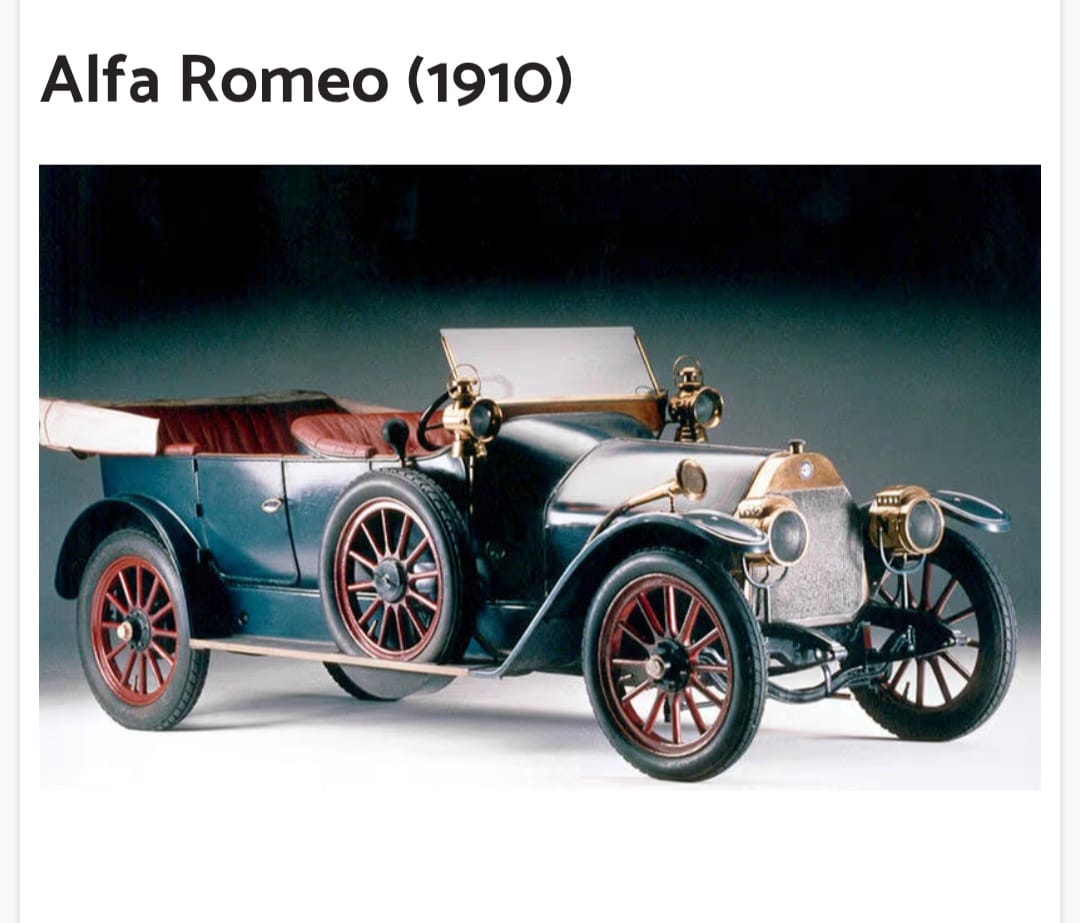
Alfa Romeo 24 HP – Italy's Racing Spirit is Born (1910)
In 1910, Anonima Lombarda Fabbrica Automobili (A.L.F.A.)—the forerunner of Alfa Romeo—unveiled its first car: the 24 HP. Built in Milan, it signaled the arrival of a new Italian marque with elegance, speed, and passion at its core.
Equipped with a 4.1-litre four-cylinder engine delivering 42 horsepower, the Alfa 24 HP was capable of speeds up to 100 km/h (62 mph)—a thrilling benchmark for its time. Its sleek curves, bold brass details, and red leather interior gave it a commanding presence on the road and racetrack alike.
Designed by Giuseppe Merosi, the car quickly made waves in early motorsports, including hill climbs and endurance runs. More than just a debut model, it was a statement: Alfa was here to excite, compete, and captivate.
At T's Auto Haven, we celebrate the Alfa 24 HP—a car that didn't just drive forward, but ignited Italy's lifelong love affair with speed, performance, and design.
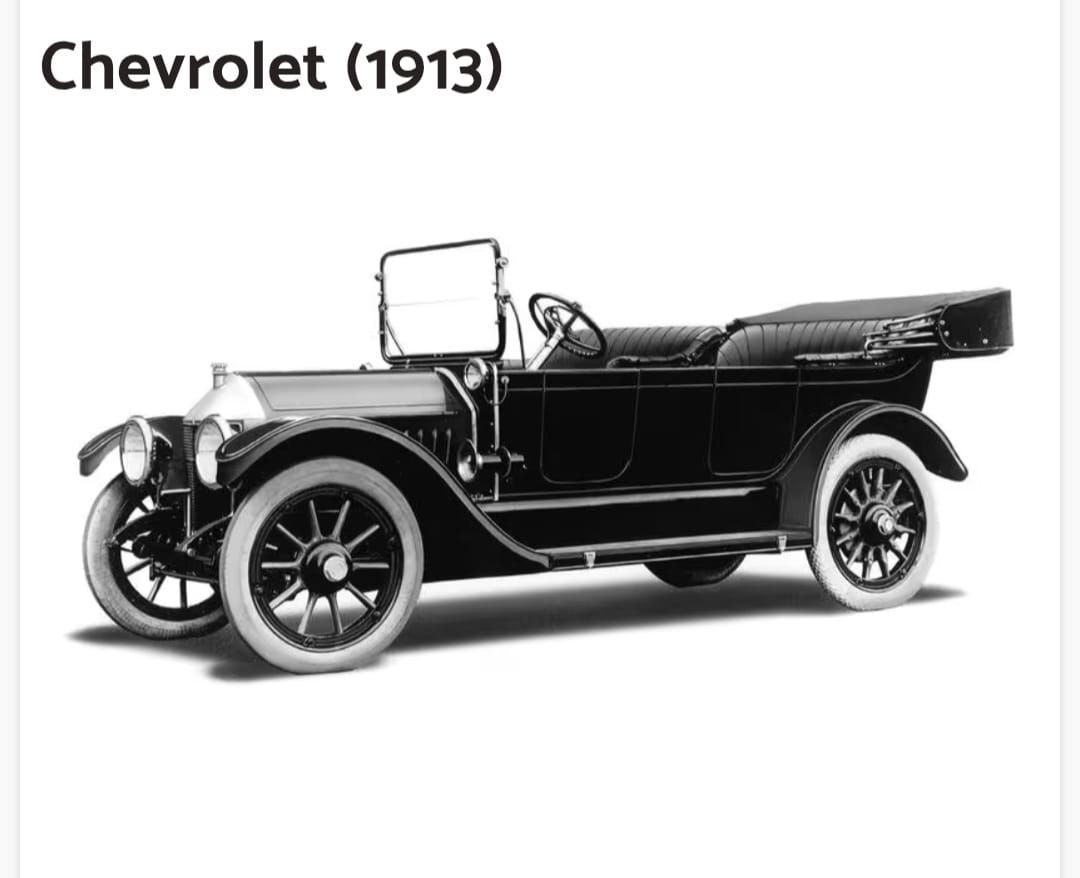
Chevrolet Series C Classic Six – America's Elegant Answer to Modern Motoring (1913)
In 1913, the newly established Chevrolet Motor Company introduced its first production car—the Series C Classic Six. It was designed by Louis Chevrolet himself, a Swiss-born racing driver and engineer, and instantly positioned the brand as a serious competitor in the growing American auto industry.
This luxurious touring car boasted a 4.9-litre six-cylinder engine producing 40 horsepower, paired with a three-speed gearbox. Capable of speeds up to 105 km/h (65 mph), it delivered both power and smooth performance—rare for its time.
With deep running boards, leather bench seating, and a stylish folding windshield, the Classic Six combined comfort with class. Though priced higher than the Ford Model T, it was aimed at drivers seeking refinement and individuality.
At T's Auto Haven, we honor the Chevrolet Classic Six—where American motoring began not just with practicality, but with poise, pride, and performance.
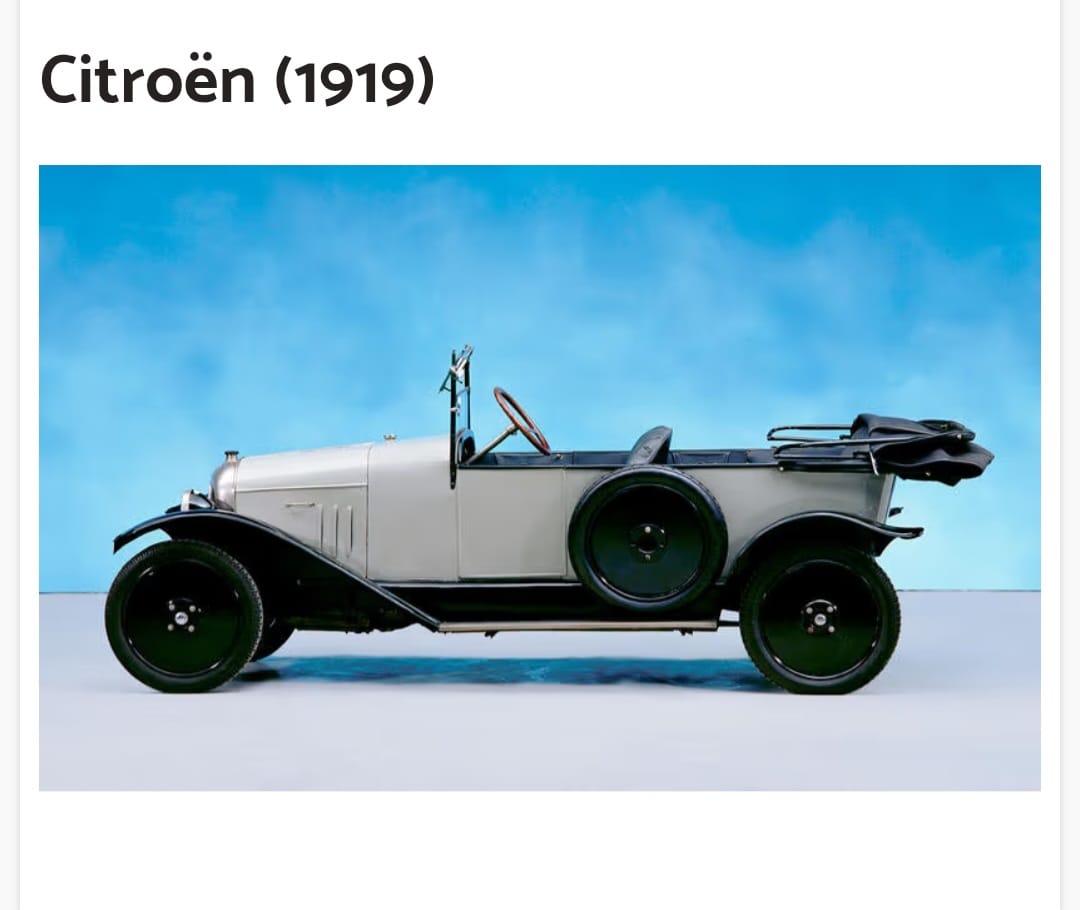
Citroën Type A – France's First Mass-Produced Car (1919)
In 1919, industrial visionary André Citroën launched the Citroën Type A 10HP, revolutionizing the French auto industry. It became the first car to be mass-produced in Europe, inspired by American methods but delivered with unmistakable French character.
Powered by a 1.3-litre four-cylinder engine generating 18 horsepower, the Type A could reach a top speed of 65 km/h (40 mph). With its streamlined body, large steel disc wheels, and fold-down roof, it offered both practicality and flair for post-war drivers ready to embrace a new era.
Built in Paris, the Citroën Type A was affordable, reliable, and easy to maintain—qualities that helped rebuild France's roads and hopes after World War I. It was a symbol of progress on four wheels.
At T's Auto Haven, we celebrate the Citroën Type A—where smart design met bold ambition, and a new age of mobility began for everyday people.
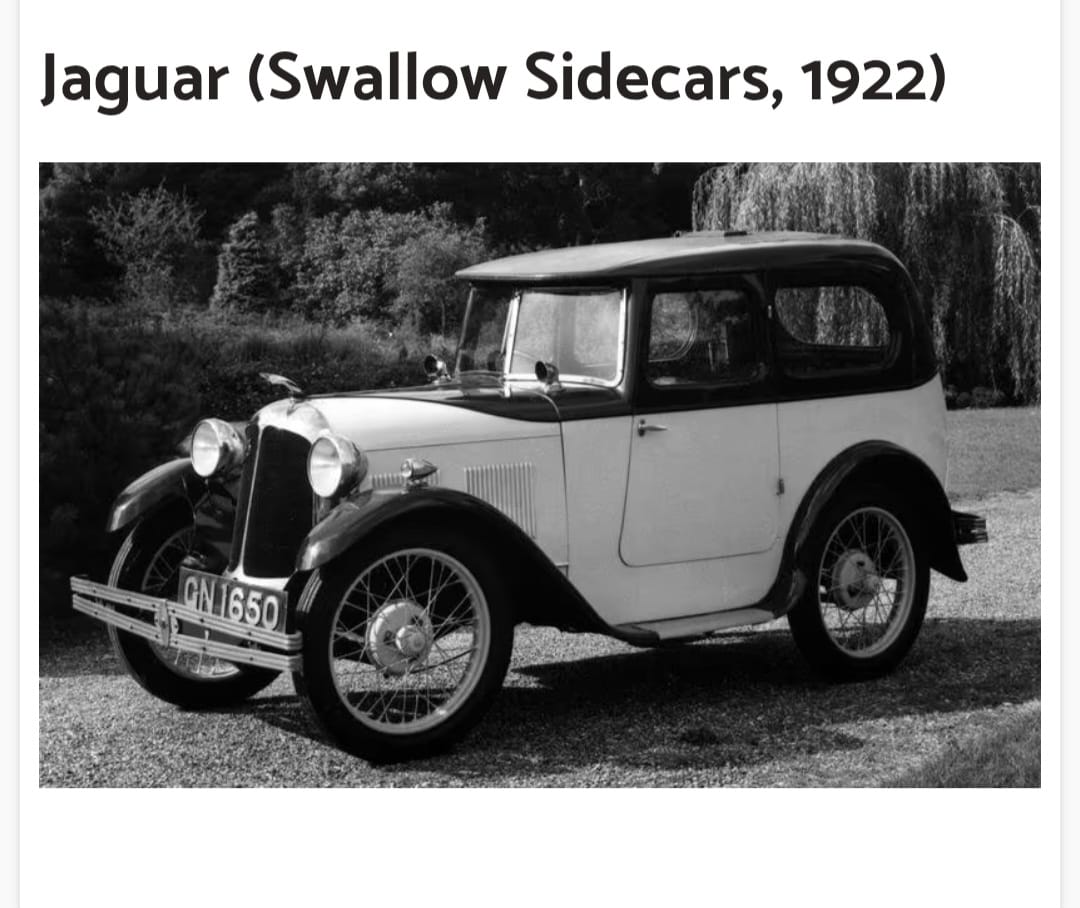
Swallow Sidecars SS-I – The Quiet Origins of Jaguar's Roar (1922)
In 1922, two British motorcycle enthusiasts—William Lyons and William Walmsley—founded the Swallow Sidecar Company, originally producing sleek motorcycle sidecars. By the late 1920s, they evolved into crafting stylish car bodies under the SS brand, planting the seed for what would become the legendary Jaguar name.
The early Swallow-bodied Austin Seven, like the one pictured, featured a modestly powered inline-4 engine with a top speed of around 80 km/h (50 mph). But what made it special wasn't raw performance—it was style, with custom metalwork, two-tone paint, and graceful curves far beyond its class.
These cars stood out as refined alternatives to the mass-market competition, catching the eye of early British motorists who craved personality over plainness.
At T's Auto Haven, we trace the Jaguar legacy back to its roots—with Swallow Sidecars, where a dream of elegance on the road began with vision, skill, and a spark of British charm.
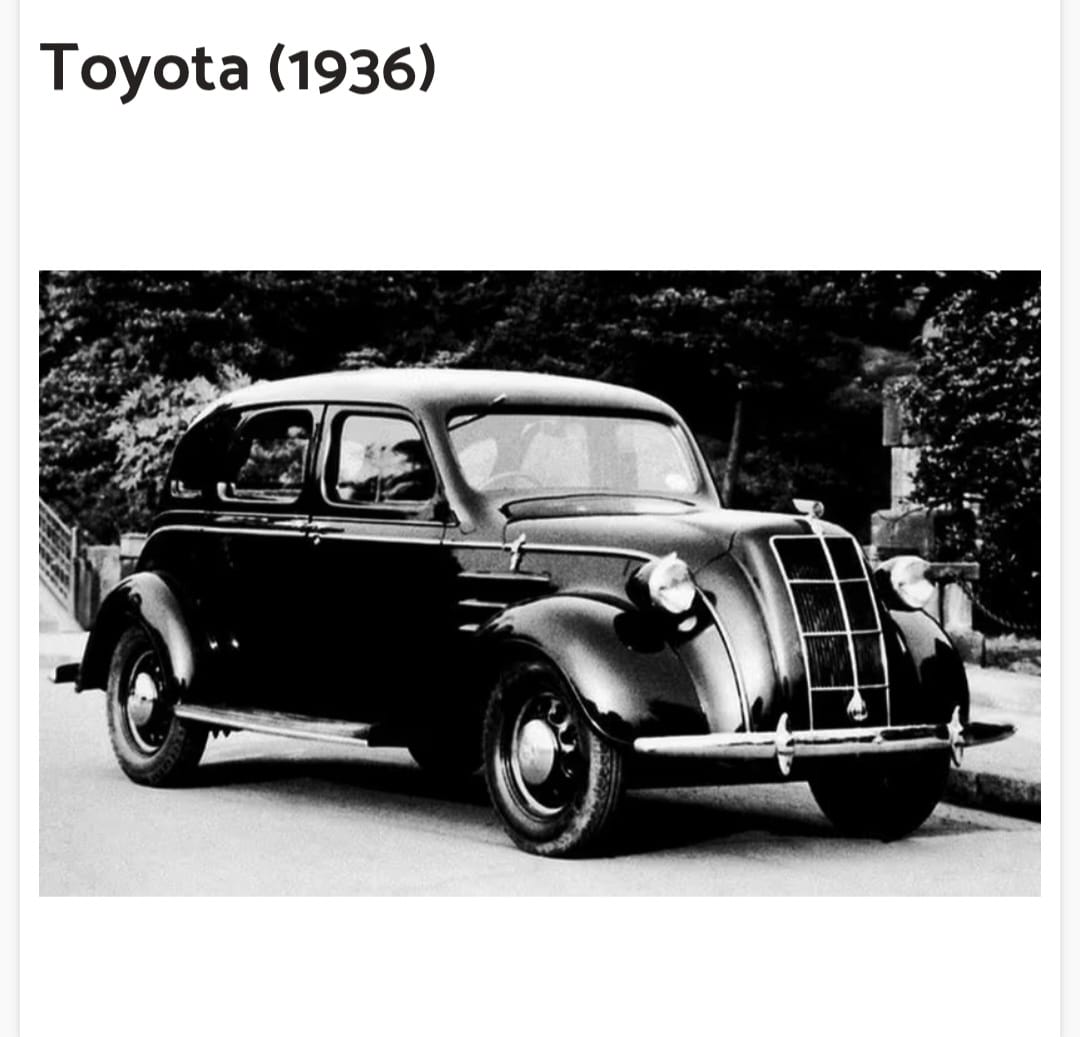
Toyota AA – Japan's First Step Toward a Global Legacy (1936)
In 1936, Toyota unveiled its very first passenger car—the Toyota AA—marking the company's bold entry into the world of automotive manufacturing. Modeled after the American Chrysler Airflow, the AA blended Western design influence with the precision and discipline of Japanese engineering.
The Toyota AA featured a 3.4-litre six-cylinder engine, producing 62 horsepower, with a manual 3-speed transmission and a top speed of 95 km/h (59 mph). Its smooth, rounded body, spacious cabin, and art deco grille gave it a confident and modern presence.
Built during a time of rapid industrial change, the AA wasn't just Toyota's first car—it was the beginning of a vision that would transform the company into one of the world's most trusted automotive brands.
At T's Auto Haven, we honor the Toyota AA—a car that quietly launched a global giant and proved that excellence starts with a single, powerful idea.
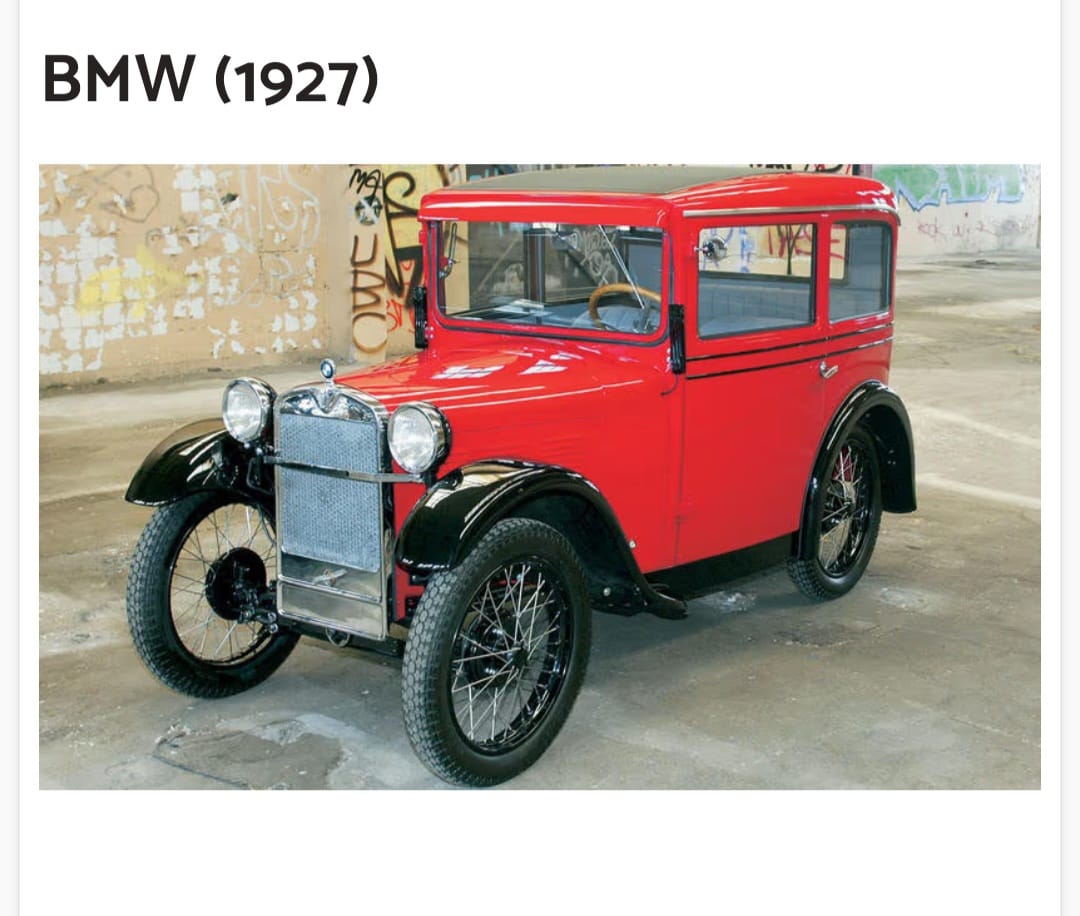
BMW Dixi 3/15 – The Humble Beginning of a Performance Legend (1927)
In 1927, BMW took its first step into car manufacturing with the Dixi 3/15, a licensed version of the Austin Seven. Before its fame in performance and engineering excellence, BMW began with this compact and charming city car—practical, efficient, and built for a new kind of driver.
Powered by a 747cc four-cylinder engine producing 15 horsepower, the Dixi reached speeds of up to 75 km/h (47 mph). With its lightweight steel body, wire wheels, and upright stance, it was the perfect introduction to motor travel for everyday families in post-war Germany.
Though modest in performance, the Dixi laid the foundation for BMW's precision craftsmanship and forward-thinking design—a spirit that would later define some of the world's most iconic sports cars.
At T's Auto Haven, we honor beginnings like the Dixi—proof that even the most powerful names in motoring start with small, determined steps.
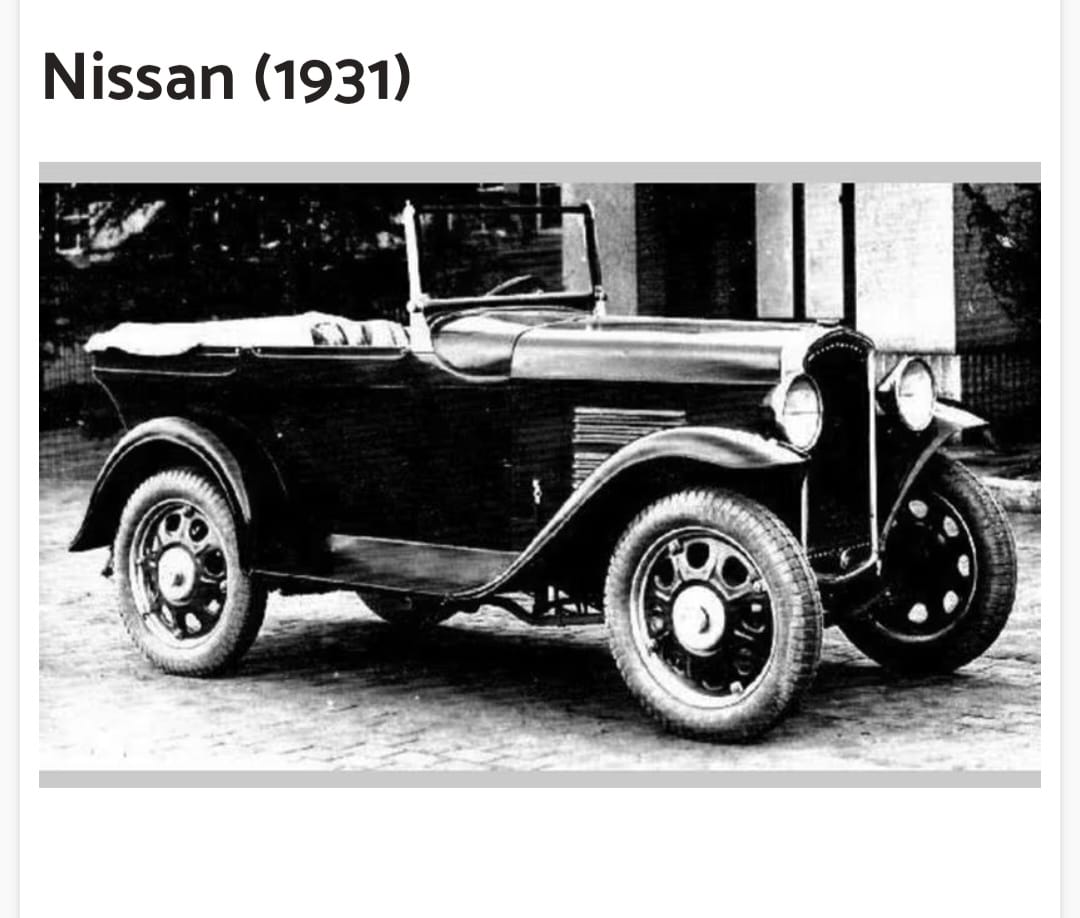
Datson Type 10 – The Modest Beginning of Nissan's Bold Journey (1931)
Before it became Nissan, Japan's future automotive powerhouse launched its first small passenger car in 1931 under the name Datson (later changed to Datsun). The Type 10 was a lightweight, affordable vehicle designed to bring motoring to Japan's everyday people.
Powered by a 495cc four-cylinder engine producing around 10 horsepower, the Datson Type 10 could reach speeds up to 50 km/h (31 mph). Though modest, it was nimble, easy to maintain, and ideal for Japan's narrow city streets and rural roads.
Its success paved the way for Nissan's formation and growth, eventually leading to a lineup that would conquer both domestic and international markets with innovation and reliability.
At T's Auto Haven, we salute the Datson Type 10—a symbol of humble beginnings, crafted for the people, and destined for greatness in the world of mobility.
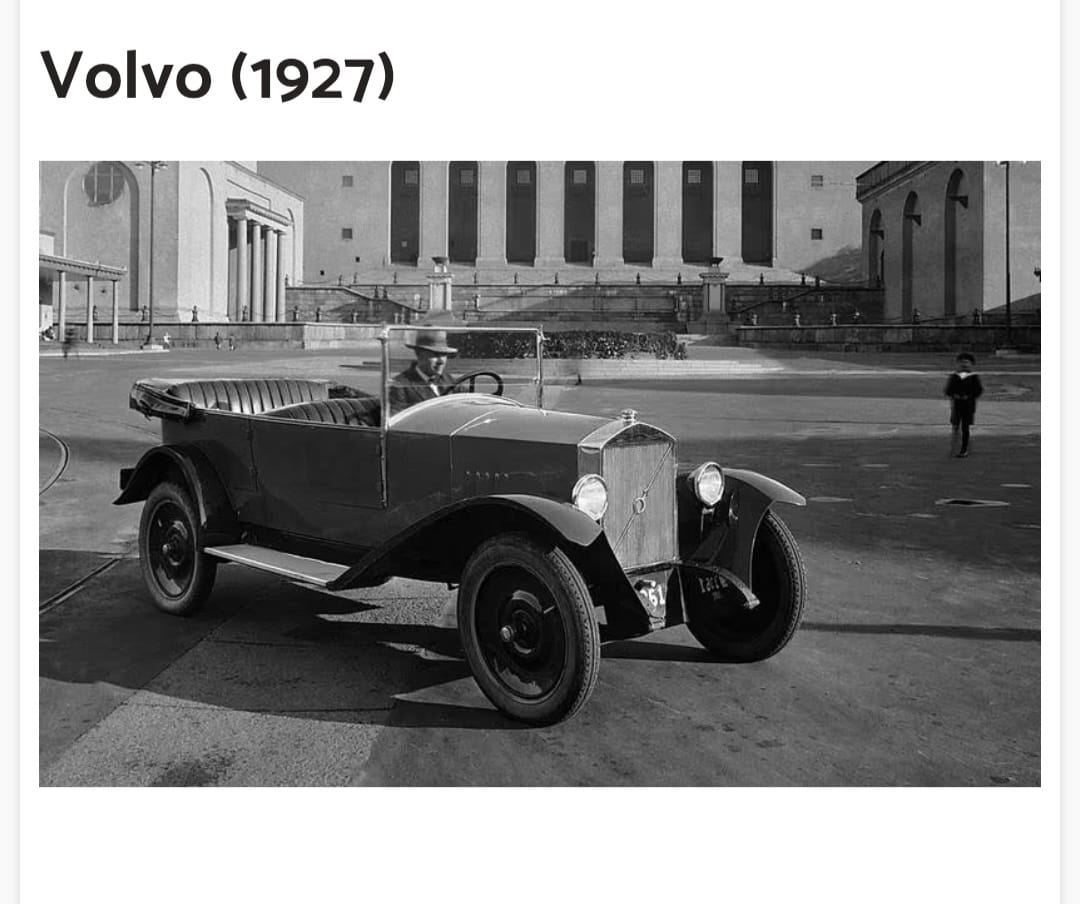
Volvo ÖV 4 – Sweden's First Car and a Legacy in Motion (1927)
On April 14, 1927, the very first Volvo rolled out of the factory in Gothenburg, Sweden. Named the ÖV 4 (short for Öppen Vagn 4 cylindrar, or "Open Car, 4 cylinders"), it was the first step in what would become one of the most respected names in global motoring.
The ÖV 4 was equipped with a 2.0-litre inline-four engine producing 28 horsepower, giving it a top speed of around 90 km/h (56 mph). Designed with Sweden's rough roads in mind, it featured a robust chassis, reinforced suspension, and a convertible body style perfect for both utility and style.
Volvo's early emphasis on durability and safety began right here—with a car that was proudly Swedish, thoughtfully engineered, and built to last.
At T's Auto Haven, we pay tribute to the Volvo ÖV 4—where rugged reliability met elegant beginnings and set a new standard for the road ahead.
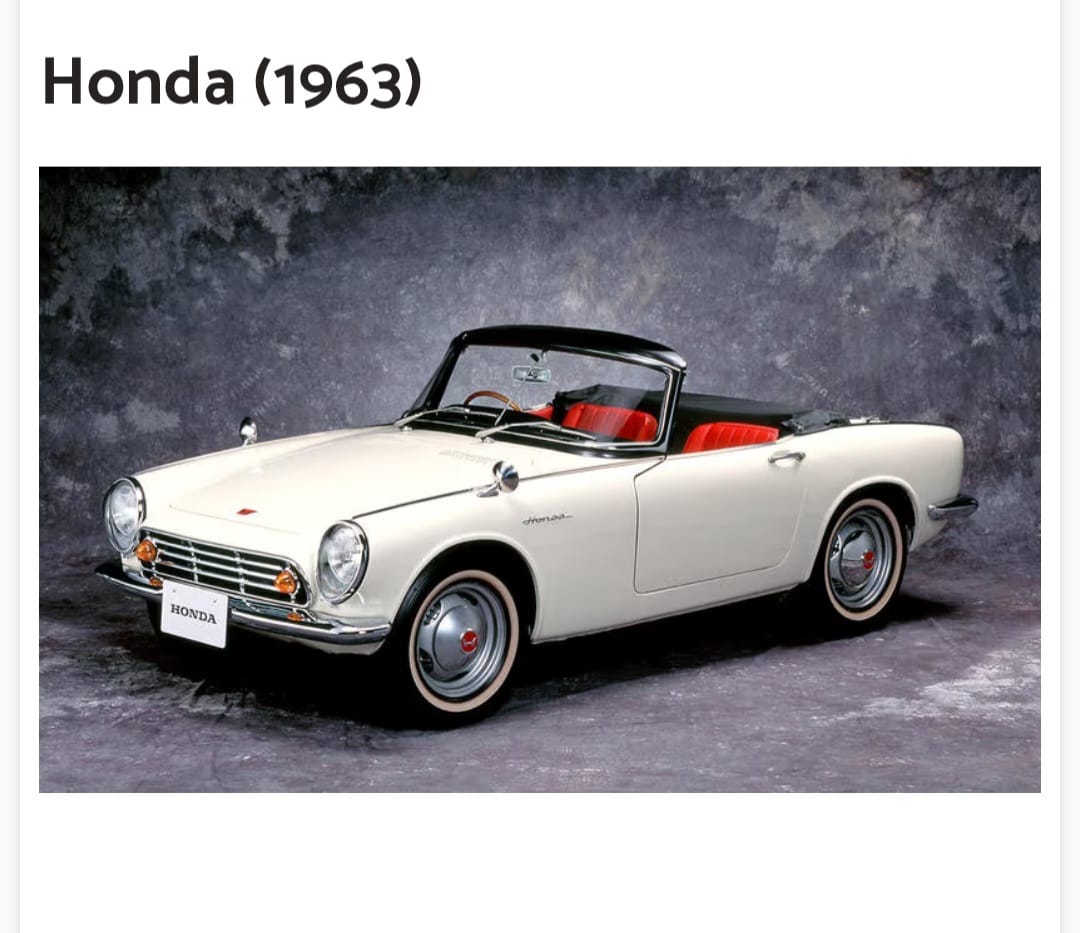
Honda S500 – Japan's Stylish Sports Debut (1963)
In 1963, Honda—already a motorcycle powerhouse—made a bold entrance into the automobile world with the sleek and sporty S500. This nimble roadster was Japan's answer to European sports cars, combining lightweight design with advanced engineering and unmistakable charm.
The S500 came equipped with a 531cc dual overhead cam inline-4 engine, producing 44 horsepower, and revving up to 9,500 RPM—an astonishing figure for its class. With a 4-speed manual transmission, chain-driven rear wheels, and a top speed of 130 km/h (81 mph), it offered true sports performance in a compact, affordable package.
Its clean lines, round headlamps, chrome trim, and bright red interior gave it timeless appeal. The S500 set the tone for Honda's future: innovation, excitement, and reliability in perfect balance.
At T's Auto Haven, we spotlight the Honda S500—a confident first step from bikes to brilliance, crafted for drivers who love the open road and the thrill of the drive.
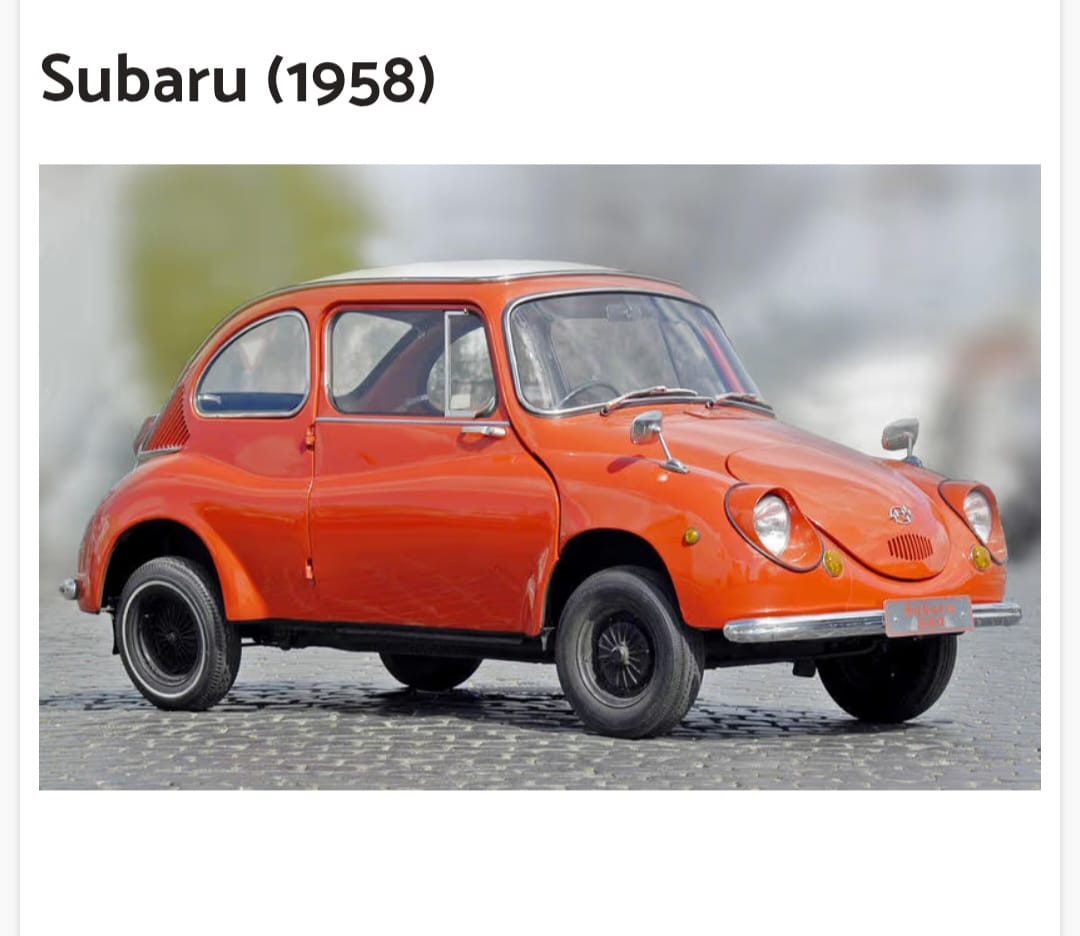
Subaru 360 – The Little Car That Moved a Nation (1958)
Nicknamed the "Ladybug" for its round, friendly shape, the Subaru 360 was Japan's first mass-produced car. Released in 1958, it marked Subaru's debut into the automotive world, designed to meet the government's call for an affordable "people's car."
Powered by a 356cc two-stroke twin-cylinder engine, the Subaru 360 delivered 16 horsepower and reached speeds of around 85 km/h (53 mph). Lightweight and fuel-efficient, it could seat four passengers while weighing under 450 kg—making it exempt from certain taxes under kei car regulations.
Despite its size, the Subaru 360 became a symbol of mobility and freedom for Japanese families, selling over 390,000 units in its 12-year production run. It helped put post-war Japan on wheels, one cheerful bug-eyed car at a time.
At T's Auto Haven, we celebrate the Subaru 360—a tiny but mighty classic that brought joy, practicality, and movement to millions.
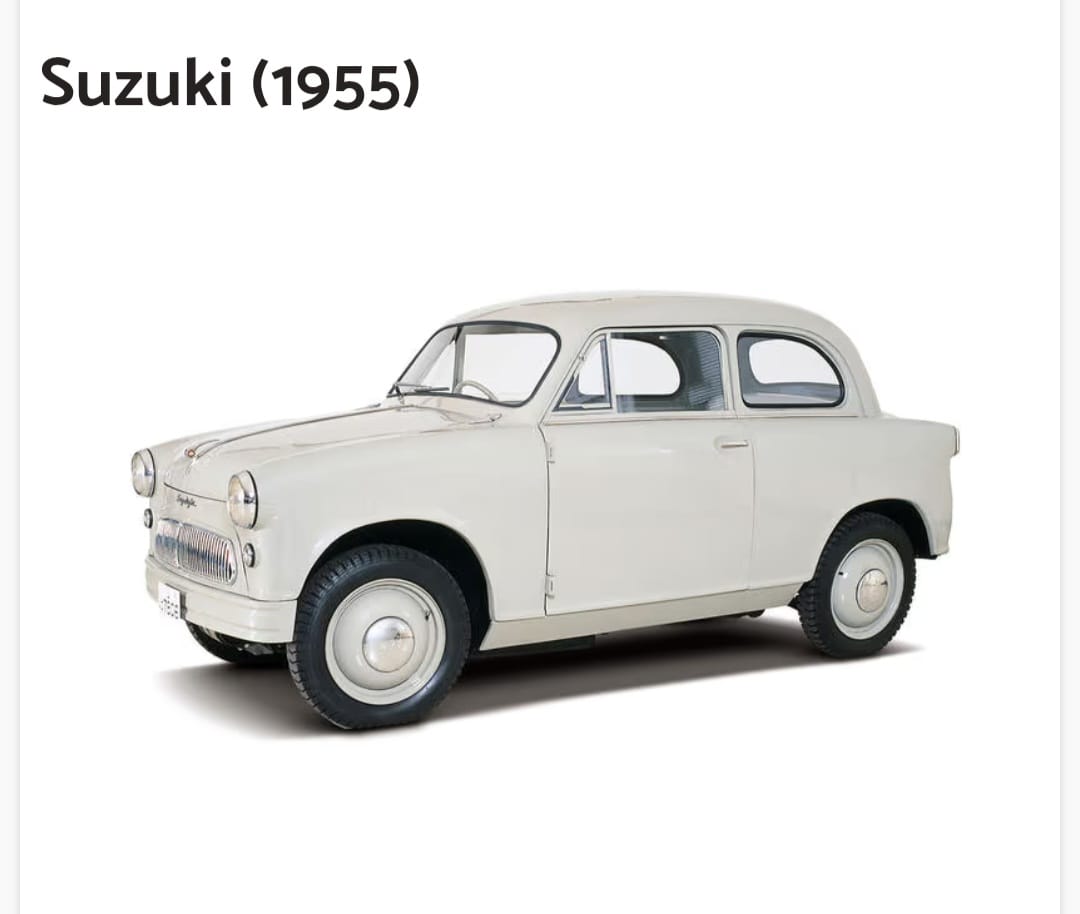
Suzuki Suzulight – The Compact Spark That Lit a Legacy (1955)
In 1955, Suzuki, then known for weaving looms and motorcycles, stepped into the automotive world with the Suzulight—a small but significant car that pioneered Japan's kei car movement. It was one of the first domestically produced cars built specifically for Japan's post-war roads and needs.
Equipped with a 359cc two-stroke inline-2 engine, the Suzulight produced 15 horsepower and had a top speed of about 80 km/h (50 mph). It was among the first Japanese cars to feature front-wheel drive, independent suspension, and rack-and-pinion steering—technologies well ahead of their time.
Compact, affordable, and reliable, the Suzulight quickly became a symbol of Japan's rapid modernization and Suzuki's bold leap into car manufacturing.
At T's Auto Haven, we honor the Suzuki Suzulight—a little car that quietly led a big transformation in how Japan moved, designed, and drove into the future..
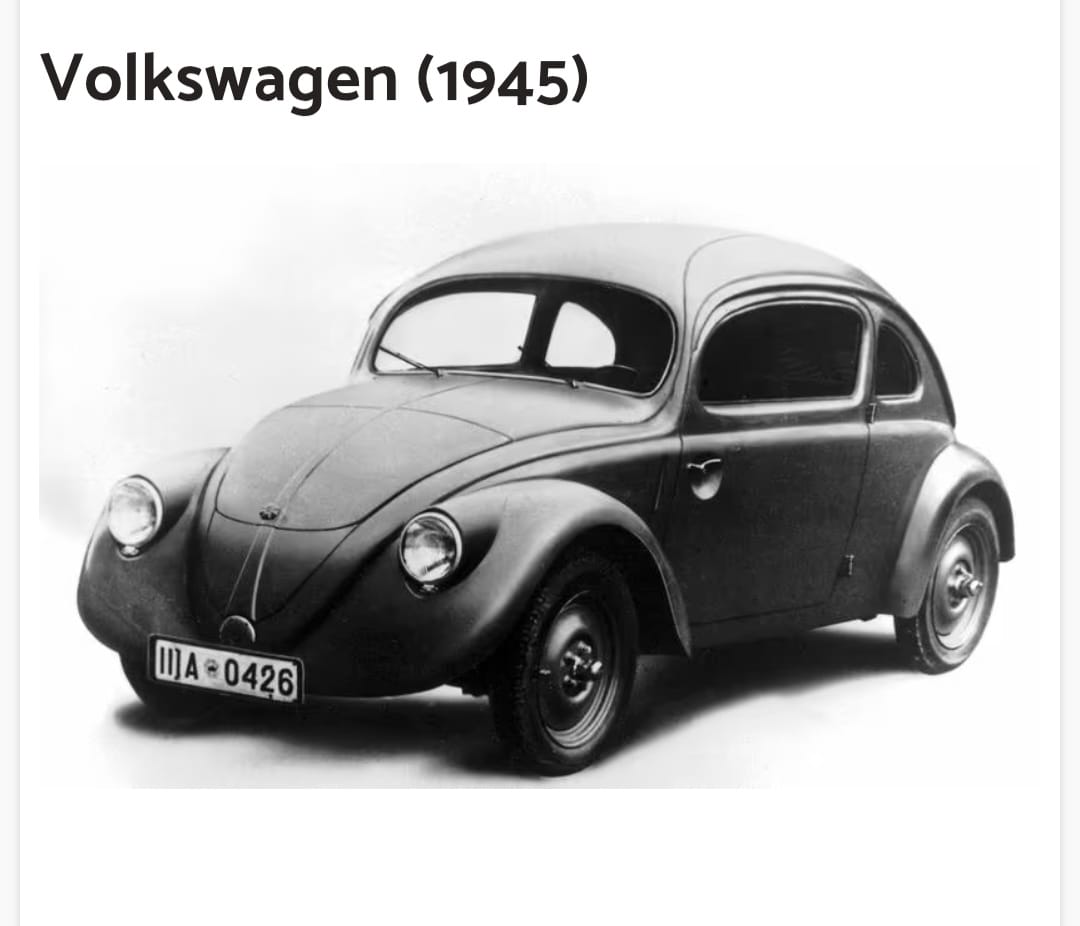
Volkswagen Beetle – The People's Car That Rolled Through History (1945)
In the aftermath of World War II, the Volkswagen Type 1—later known as the Beetle—emerged from the ruins of Germany as a symbol of practicality, hope, and economic revival. Originally developed in the 1930s, large-scale civilian production truly began in 1945, under British occupation.
The early Beetle featured a 1.1-litre air-cooled flat-four engine, producing 25 horsepower, and reaching a top speed of around 100 km/h (62 mph). Its rear-engine, rear-wheel-drive layout, curved aerodynamic body, and bulletproof simplicity made it perfect for everyday use.
Designed by Ferdinand Porsche, the Beetle quickly became one of the best-selling cars of all time, with over 21 million units produced globally. It was affordable, reliable, and universally loved.
At T's Auto Haven, we celebrate the Volkswagen Beetle—not just as a car, but as a movement. A timeless design that put the world on wheels, one joyful ride at a time.
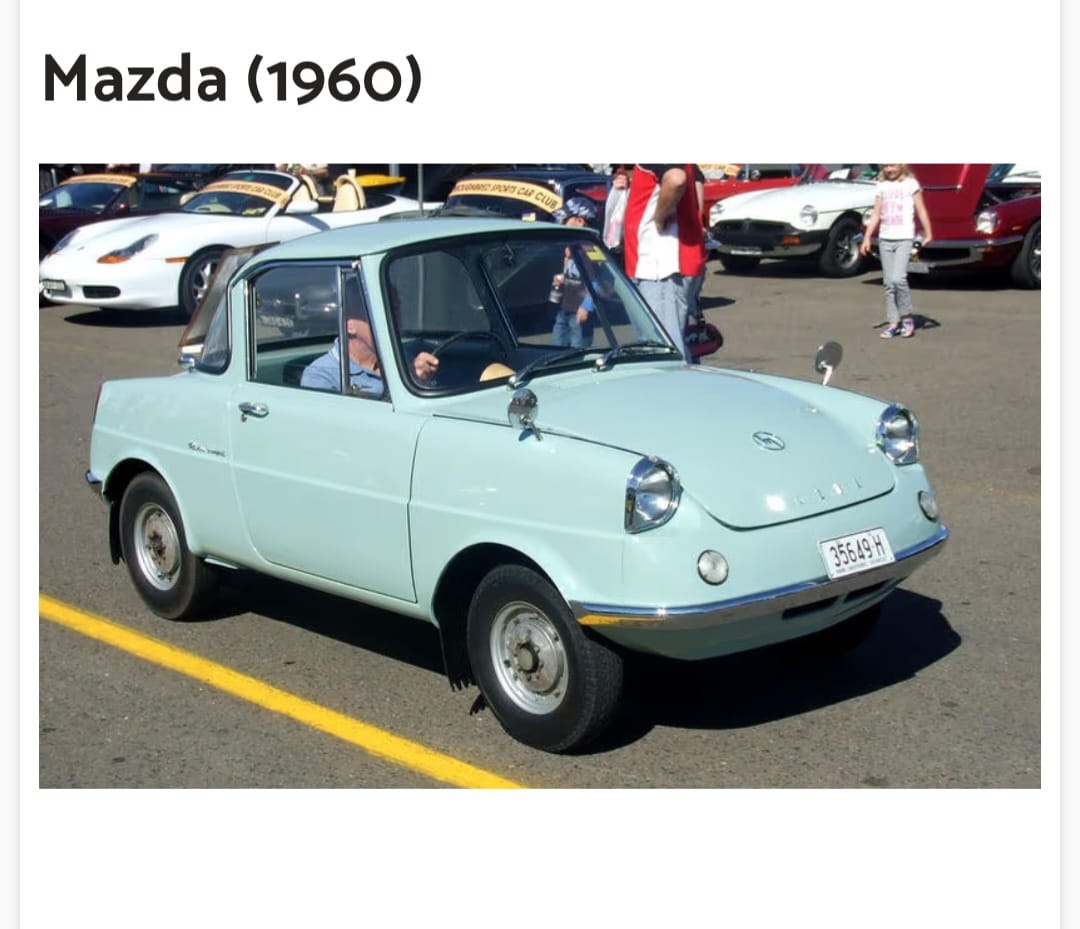
Mazda R360 – The Featherlight Coupe That Launched a Brand (1960)
In 1960, Mazda—then known mostly for its three-wheeled trucks—introduced the R360 Coupe, its very first passenger car. With sleek curves, a compact frame, and surprising comfort, this little two-door captured the hearts of Japan's young drivers almost overnight.
Powered by a 356cc V-twin engine, the R360 produced 16 horsepower and weighed just 380 kg, making it light, nimble, and incredibly fuel-efficient. With a top speed of 84 km/h (52 mph) and automatic or manual transmission options, it was accessible to nearly everyone.
Despite its small size, the R360 offered a roomy interior and stylish design—perfect for Japan's growing middle class. It sold nearly 65% of all kei cars in its debut year, firmly planting Mazda on the map.
At T's Auto Haven, we spotlight the Mazda R360—a tiny coupe that brought big dreams to life, proving that elegance and efficiency could ride together.
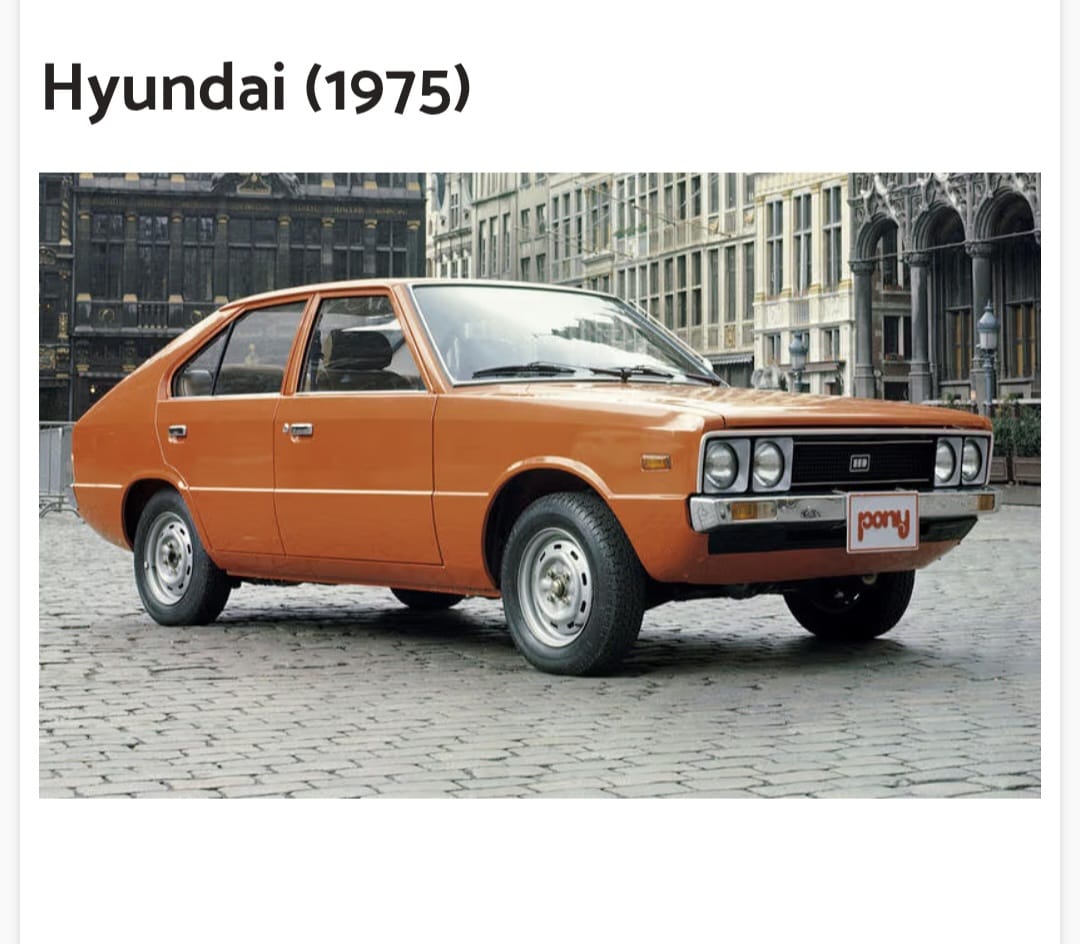
Hyundai Pony – South Korea's First National Car Takes the Reins (1975)
In 1975, Hyundai unveiled the Pony, the first car to be designed, developed, and manufactured in South Korea. It marked the beginning of a bold new chapter—not just for Hyundai, but for an entire country rising in the world of industry and innovation.
Styled by famed designer Giorgetto Giugiaro and engineered with Mitsubishi-sourced engines, the Pony featured a 1.2- to 1.4-litre inline-4 engine, producing up to 68 horsepower, with a top speed of about 150 km/h (93 mph). Its hatchback body was modern, functional, and perfect for families and commuters alike.
Exported around the world—including Canada, the UK, and Latin America—the Pony helped Hyundai establish itself as a serious global player in automotive manufacturing.
At T's Auto Haven, we proudly present the Hyundai Pony—a car born of vision and hard work, carrying a nation's dreams toward the future.
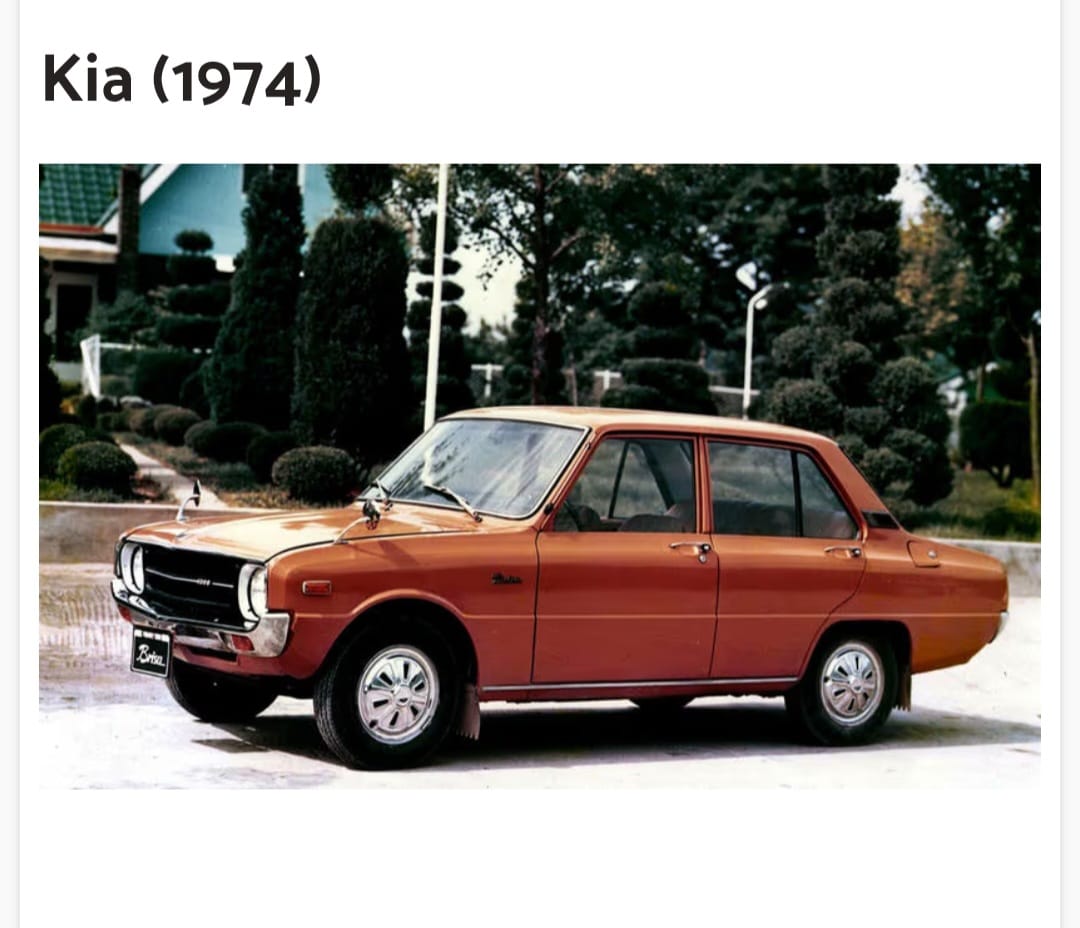
Kia Brisa – The Sedan That Gave Kia Its First Real Road Presence (1974)
In 1974, Kia launched the Brisa, its first passenger car and a key milestone in South Korea's journey toward becoming an automotive powerhouse. Based on the Mazda Familia platform, the Brisa blended international engineering with local ambition.
It featured a 1.0-litre or 1.3-litre inline-4 engine, offering up to 72 horsepower, and a top speed of approximately 140 km/h (87 mph). With its clean lines, chrome detailing, and practical four-door design, the Brisa gave South Korean drivers an affordable, stylish option for everyday use.
The Brisa also marked Kia's first exports and laid the groundwork for the company's future growth—eventually leading to global models that are now sold in over 180 countries.
At T's Auto Haven, we recognize the Kia Brisa as more than just a car—it was the foundation for Kia's global story, driven by progress, pride, and possibility.
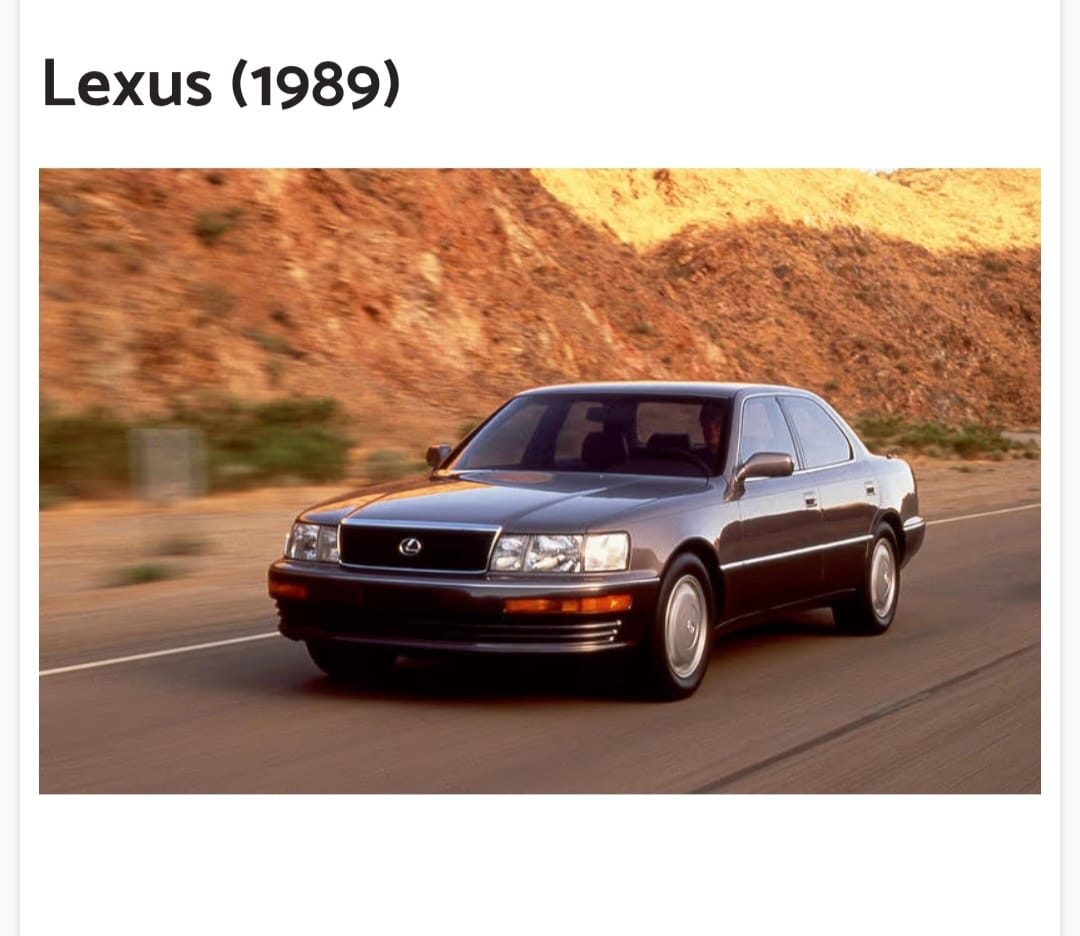
Lexus LS 400 – The Japanese Luxury Sedan That Shook the World (1989)
In 1989, Toyota launched Lexus as its new premium brand, with the LS 400 as its flagship. Quietly confident and meticulously engineered, the LS 400 didn't just compete with Europe's best—it challenged their dominance with precision, value, and unmatched reliability.
Under the hood was a 4.0-litre V8 engine delivering 250 horsepower, paired with a 4-speed automatic transmission and rear-wheel drive. It could reach 0–60 mph in 8.5 seconds, yet stayed whisper-quiet even at highway speeds thanks to its aerodynamic design and soundproofing.
From leather interiors and power everything, to its elegant styling and nearly flawless build quality, the LS 400 introduced the world to Japanese luxury on a whole new level. It redefined what luxury could be—not loud or flashy, but refined, smooth, and smart.
At T's Auto Haven, we feature the Lexus LS 400 as the game-changer that proved luxury didn't have to come from tradition—it could come from innovation.